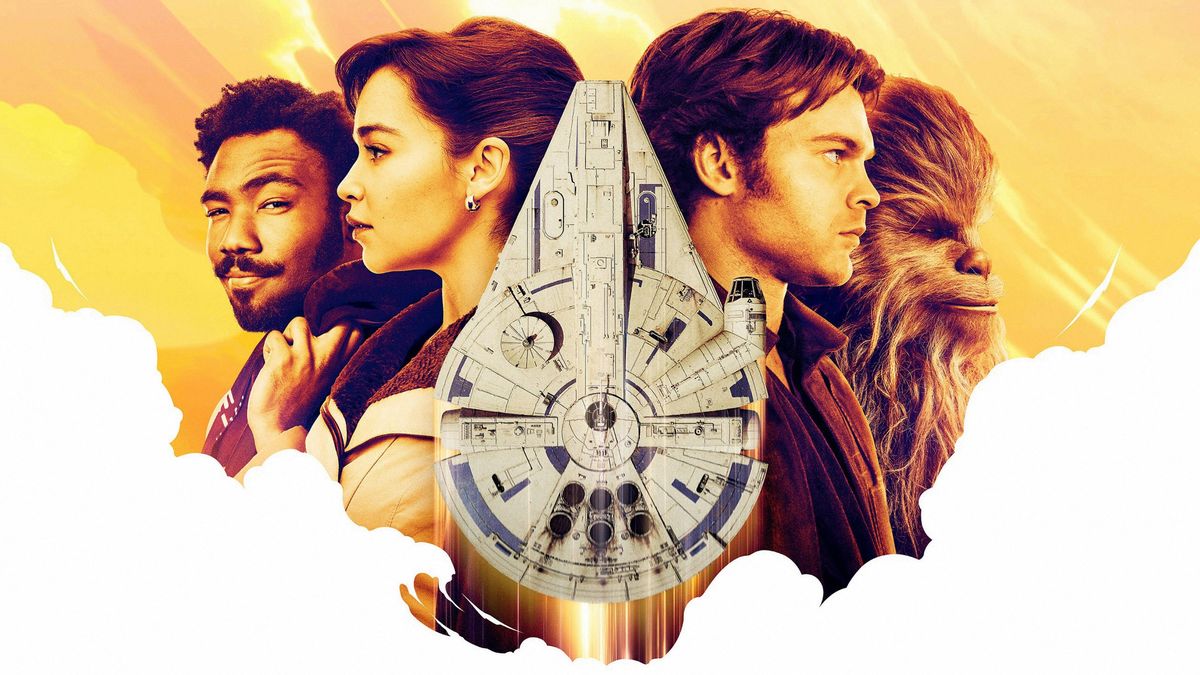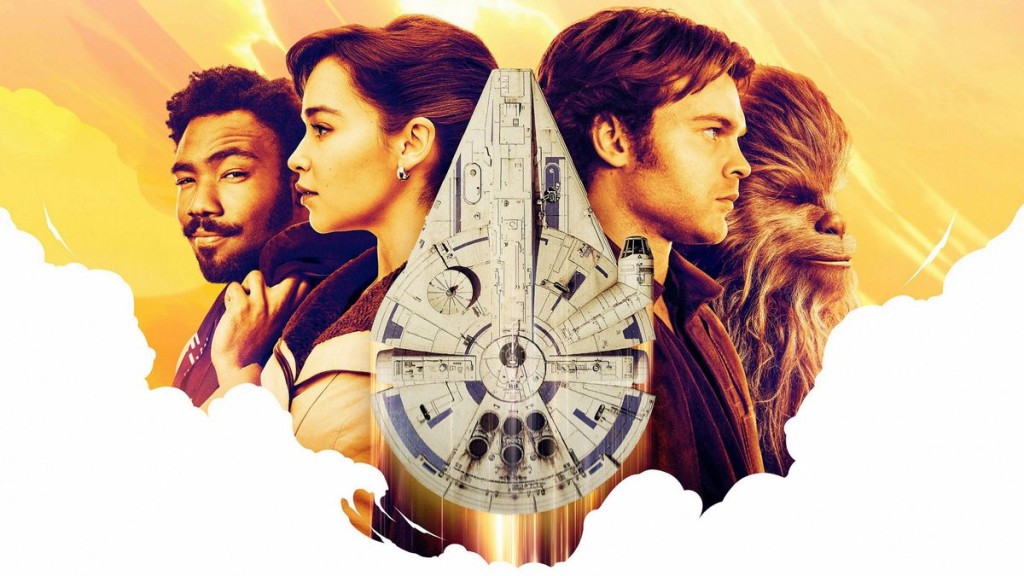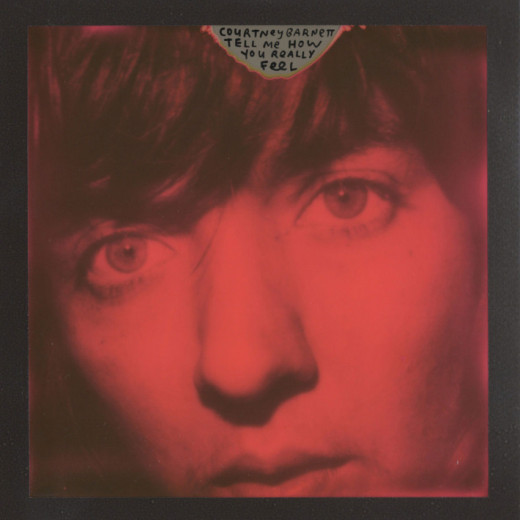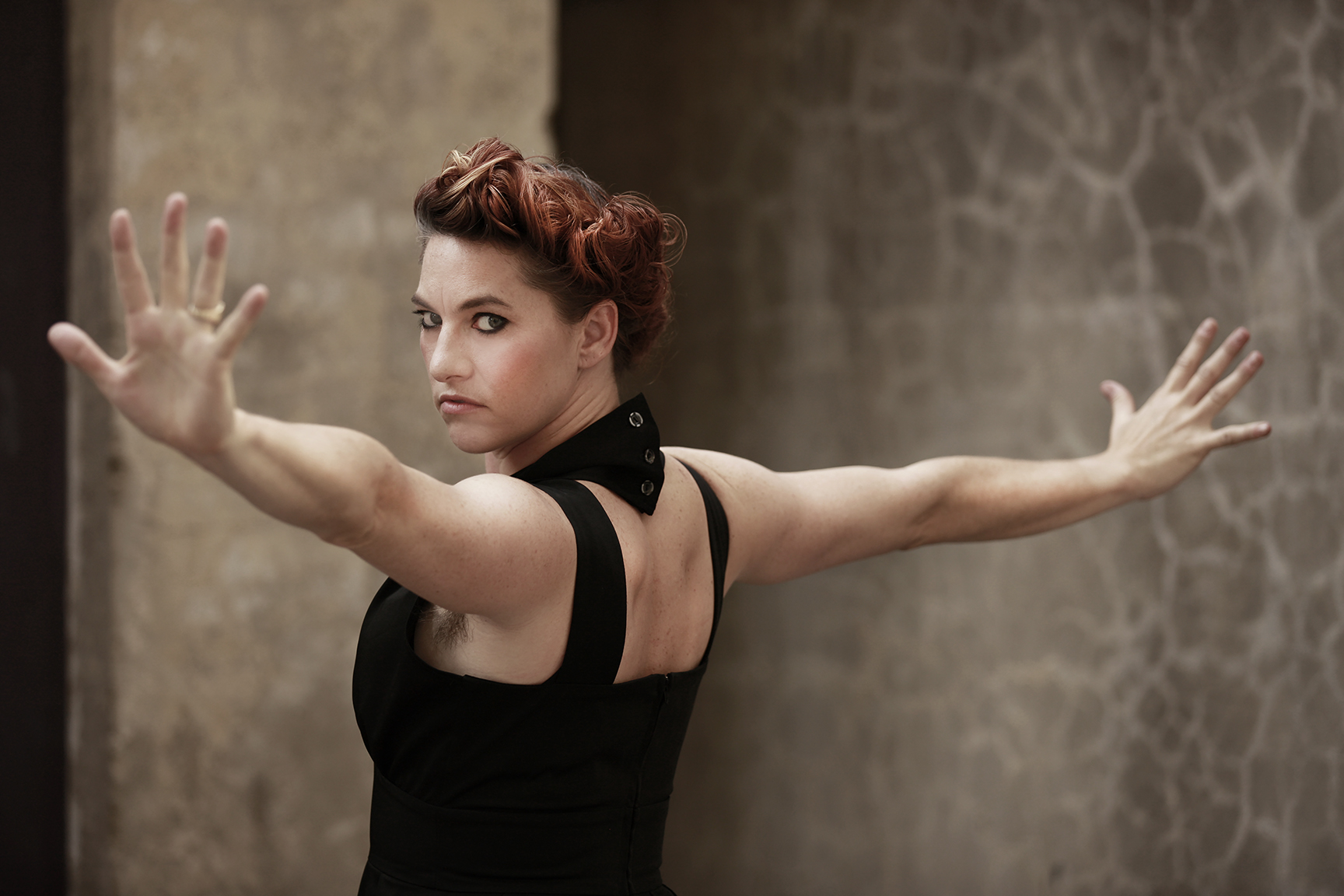‘I’m an outlaw’, declares Alden Ehrenreich’s young Han in Solo: A Star Wars Story, the latest in Lucasfilm’s line of standalone spin-offs. Emilia Clarke, playing Qi’ra, the One Who Got Away, laughs. She doesn’t believe him. And neither will anyone watching.
Kylo Ren’s call to ‘let the past die; kill it if you have to’ is great storytelling advice masked as Oedipal anxiety, and it’s advice that post-prequels Lucasfilm, addicted to the past, is unable to grasp. Lucasfilm can’t kill the past because the past is the golden goose. Solo, written by father-son Kasdans Lawrence and Jonathan, and directed, in the end, by Ron Howard, is held hostage by memory. Ehrenreich’s got a tough task for sure, putting his own spin on a role so indelibly associated with Harrison Ford, and he struggles, like the adventure around him, to justify the need for this gap-filling enterprise in the first place.
Fan service culture makes the mistake of thinking that information is story, and this insistence on explanation helps fuel modern prequelitis (see: Epix’s forthcoming Pennyworth). Prequels compel us when we want to know why someone is the way they are. Some really gnarly shit has to happen to you before you decide to live under a bug-eyed echoey metal helmet and build something called a ‘Death Star’. But do we really need to know Han Solo became Han Solo? He’s a hustling space pirate, an in-over-his-head rascal, a walking trope accidentally given life by the perfect performance. What, exactly, demands to be unpacked?
Turns out Han Solo didn’t really become Han Solo, he’s just always been pretty Han Solo-y. Solo opens on a garbage planet where Han and Qi’ra scrape live in bondage to gangsters. Han escapes, but she does not, and he dreams of flying back to rescue her. After a stint in the imperial forces — there’s a short war scene that’s actually quite full-on — Han and his new mate Chewbacca (a furry Joonas Suotamo) get drafted into a group of bandits led by Woody Harrelson’s Beckett, who becomes a kind of mentor to Han.
Their band of rogues — filled out with Thandie Newton, multi-spronged CGI pilot voiced by Jon Favreau and a young Lando Calrissian, played by Donald Glover as a swashbuckling hipster cape cad — embark on a multi-setpiece heist to steal hyperfuel for Paul Bettany’s Dryden Voss, boss of criminal syndicate Crimson Dawn.
Solo is designed as a caper, but it isn’t that funny, and often isn’t even fun, which is surely the minimum for a Han Solo movie. Ford’s laidback handsomeness gave Han an edge of reckless, daring stupidity. With his squinting, distanced expression, Ehrenreich plays Han as a too-cool cowboy — there’s even a standoff holster close-up, and a train robbery sequence. But he feels small and flat, smirking a little too hard, his delivery never getting into the loose rhythm the film needs.
He’s not helped by his romantic opposite: Clarke doesn’t radiate much life, and when it’s the two of them together it’s really, really hard to care about what’s happening. Only Glover and Fleabag’s Phoebe Waller-Bridge, voicing droid liberationist L3–37, seem to be having a good time, pointing suggestively towards the version Phil Lord and Christopher Miller were aiming for, before being pulled from the project for going off-brand with improv-heavy comedy. At least the final reshot product feels like a Howard film, which is to say it doesn’t feel like it was really made by anyone at all.
Solo is so lacking in identity and energy that you literally forget this guy is supposed to be Han Solo in the first place. Laced with callbacks (callforwards?), it’s another too-safe commodity from the industrial nostalgia traffickers at Disney Corp, and fades from memory in about, oh, twelve parasecs. Conor Smyth
Solo: A Star Wars Story is out on wide release.







